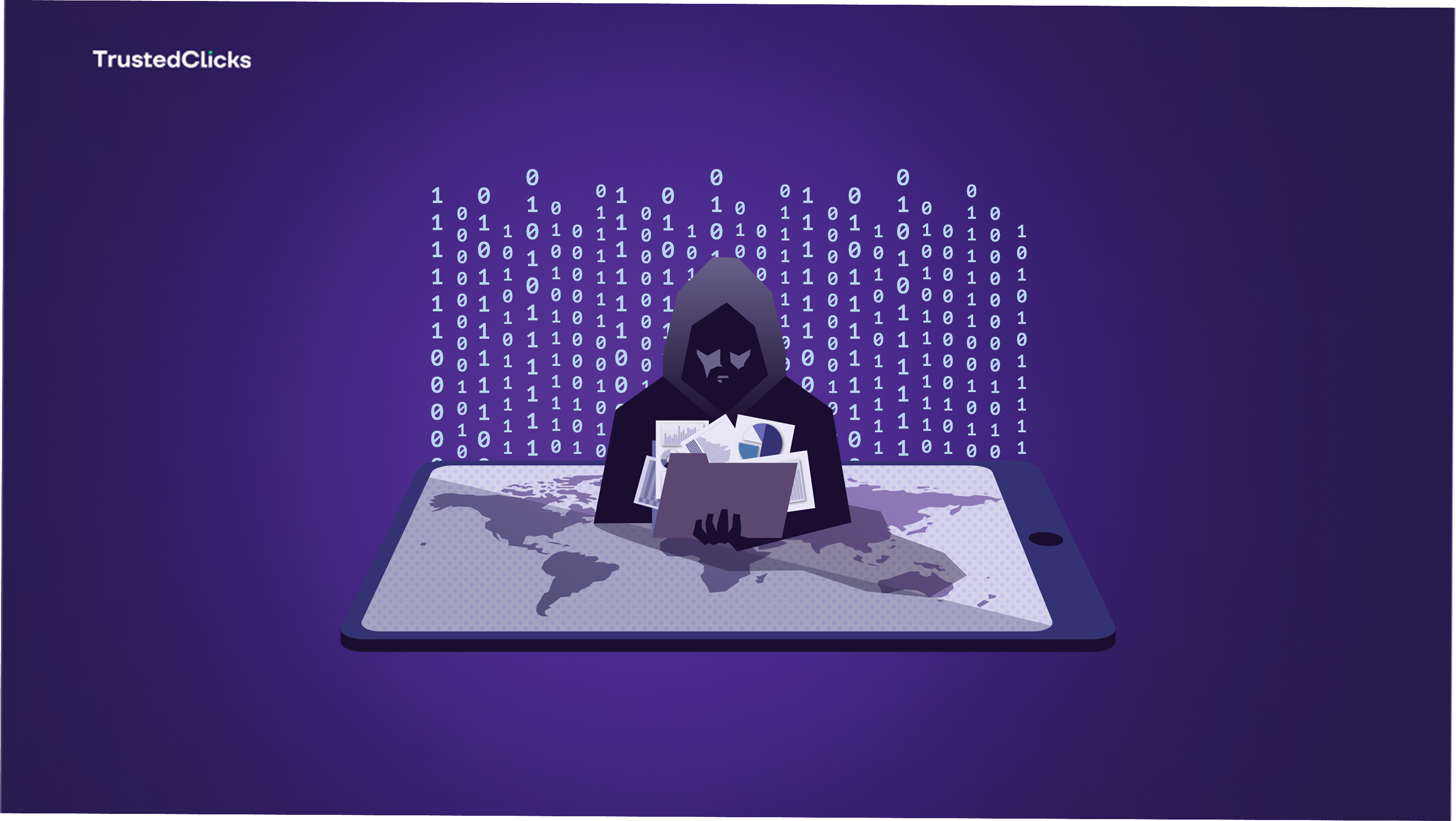- Website security
The Global Blacklist: Inside the Secret World of IP Reputation Databases


In the sprawling expanse of the internet, every connection you make carries a silent tag—a digital fingerprint known as your IP address. This unassuming string of numbers doesn’t just pinpoint your location; it tells a story about your online behavior, one that’s meticulously tracked and judged by a hidden network of gatekeepers.
Welcome to the secret world of IP reputation databases, where your IP reputation determines whether you’re welcomed as a trusted guest or shunned as a potential threat. These global blacklists, shrouded in complexity and intrigue, wield immense power over email deliverability, website access, and digital trust. In this deep dive, we’ll uncover how these systems work, who controls them, and why they’re the unsung arbiters of the online realm.
What Are IP Reputation Databases?
IP reputation databases are vast, dynamic registries that catalog the behavior of IP addresses across the internet. They’re the backbone of the global blacklist system, assigning each IP a reputation score based on its historical activity. Think of them as the internet’s bouncers—deciding who gets past the velvet rope and who’s left out in the cold. These databases track everything from spam emails and malware distribution to botnet involvement and phishing attempts, compiling a dossier that shapes how your IP is perceived.
What Are These Systems For ?
At their core, these systems aim to protect the digital ecosystem. By identifying and flagging IPs associated with malicious or disruptive behavior, they help websites, email providers, and networks filter out troublemakers. But this power comes with a catch: the process is largely invisible to the average user, and the stakes are high. A tarnished IP reputation can mean blocked emails, restricted access, or a damaged online presence—often without you even knowing why.
The Mechanics of the Global Blacklist

So, how do these databases operate? It’s a blend of data aggregation, algorithmic wizardry, and real-time monitoring. Here’s a peek under the hood:
1. Data Collection
IP reputation databases draw from a web of sources—spam traps (decoy email addresses designed to catch spammers), user complaints, honeypots (fake systems that lure attackers), and reports from ISPs and websites. Every time an IP sends a dubious email or pings a server suspiciously, it’s logged.
2. Scoring Systems
Algorithms analyze this data, assigning each IP a reputation score—often on a scale from 0 to 100. A high score signals trustworthiness; a low one hints at trouble. Factors like email bounce rates, traffic volume, and blacklist appearances all weigh in.
3. Blacklist Integration
Many databases double as blacklists—like Spamhaus or Barracuda—directly flagging IPs deemed risky. Others feed their scores to third-party systems, like firewalls or ad networks, which decide how to act.
4. Constant Updates
The internet never sleeps, and neither do these databases. They’re refreshed hourly or even in real-time, ensuring reputations reflect the latest activity.
The result is a global blacklist that’s both a shield and a sword—protecting users while quietly punishing IPs that step out of line.
The Puppet Masters: Who Runs These Databases?
The world of IP reputation isn’t a free-for-all; it’s governed by a handful of influential players, each with its own methods and motives:
- Spamhaus: The granddaddy of blacklists, Spamhaus tracks IPs and domains tied to spam, phishing, and botnets. Its Spamhaus Block List (SBL) and Exploits Block List (XBL) are gospel for email providers worldwide.
- Barracuda Networks: Known for cybersecurity solutions, Barracuda’s reputation database focuses on spam and malware, blending real-time data with user feedback.
- Cloudmark: A heavy hitter in email security, Cloudmark uses a mix of algorithmic analysis and global sensor networks to flag risky IPs—sometimes controversially, as its decisions can be opaque.
- AbuseIPDB: A community-driven effort, this database relies on user-submitted reports to build its blacklist, offering a grassroots take on IP reputation.
- Commercial Giants: IP scoring companies provide premium IP reputation services, often with deeper insights and API access for businesses.
These entities don’t just track IPs—they shape the internet’s trust landscape. Yet, their secrecy—proprietary algorithms, undisclosed thresholds—adds a layer of mystique, leaving users guessing about their fate.
The High Stakes of IP Reputation
Your IP reputation isn’t just a tech footnote; it’s a make-or-break factor in the digital world. Here’s why it matters:
- Email Deliverability: A low reputation can send your emails straight to spam—or nowhere at all. For businesses, this means lost customers and revenue.
- Website Access: Platforms block low-reputation IPs to thwart bots and scrapers, potentially locking out legitimate users in the process.
- Ad Fraud: Advertisers blacklist IPs tied to fake clicks, costing publishers ad revenue and credibility.
- Security Fallout: A bad reputation might flag you as a threat, triggering extra scrutiny or bans from services like online banking or streaming.
A Real-World Case
A small business’s IP landed on a blacklist after a rogue employee clicked a phishing link, infecting their network. Emails stopped reaching clients, sales tanked, and restoring their reputation took weeks of appeals. The global blacklist doesn’t mess around.
The Dark Side: False Positives and Power Plays
For all their utility, IP reputation databases have a shadowy underbelly. False positives—when innocent IPs get flagged—are a persistent headache. Shared IPs, like those on public Wi-Fi or corporate networks, often bear the sins of a single bad actor. Dynamic IPs, reassigned frequently by ISPs, can inherit a tainted reputation from a previous user. The result? Legitimate users face unexplained blocks or delays, with little recourse.
The Question Of Accountability
Then there’s the question of accountability. Who decides what constitutes “bad” behavior? Some blacklists—like UCEPROTECT—have faced criticism for aggressive policies or even pay-to-delist schemes, raising ethical red flags. The lack of transparency fuels conspiracy theories: Are these databases tools for protection or instruments of control?
Navigating the Blacklist: Can You Fight Back?
Caught in the crosshairs of a bad IP reputation? You’re not powerless. Here’s how to claw your way back:
- Check Your Status: Use tools let you see if your IP’s blacklisted and by whom.
- Fix the Root Cause: Scan for malware, tighten email practices (think SPF, DKIM, DMARC), and stop any suspicious traffic from your network.
- Appeal Listings: Most blacklists offer delisting processes—submit evidence of reform, though approval isn’t guaranteed and can take days.
- Switch IPs: If all else fails, request a new IP from your ISP, though this resets your reputation clock.
Prevention beats cure: monitor your IP regularly, secure your systems, and avoid shared IPs for critical operations. A clean slate is easier to keep than to reclaim.
What's Next
As the internet grows, so does the global blacklist. With IPv6 expanding the IP pool and IoT devices flooding networks, tracking reputations will get trickier. AI promises smarter detection—predicting bad behavior before it happens—but risks amplifying false positives. Meanwhile, decentralized systems, like blockchain-based reputation trackers, could challenge the old guard, offering transparency where it’s long been lacking.
The stakes are rising, too. As businesses lean harder on digital channels, a pristine IP reputation becomes a competitive edge—not just a technical necessity.
Frequently Asked Questions About IP Reputation
What is IP Reputation ?
IP reputation evaluates the trustworthiness of an IP address based on its behavior and the volume of unwanted requests it generates.If it is associated with malicious activity or excessive spam, its reputation score declines. Maintaining a good IP reputation is crucial for ensuring reliable communication and preventing fraudulent activities. Organizations often use IP reputation scores to filter out potentially harmful traffic and safeguard their online assets. TrustedClicks provides IP scores from 0 to 1 and trust levels with the following ranking: Low Risk and low possibility of fraud (below 0.4): Medium Risk and no strong indication of positive or negative result (0.4- 0.85), High Risk and high possibility of fraud (above 0.85).
How Do I Build My IP Reputation?
Start by protecting your website from malicious traffic by checking every visitor’s IP reputation score. Create a secure environment that attracts and retains legitimate users while automatically blocking suspicious IPs, VPNs, and proxy connections. Over time, as your platform maintains consistently high security standards and clean traffic, your IP reputation naturally strengthens and helps establish lasting trust with your users. Use TrustedClicks’s advanced monitoring and AI-driven tool to ensure the integrity of online platforms, filter out fake clicks and focus on genuine user interactions.
How to fix IP reputation?
Improving your IP reputation involves several key steps to enhance the behavior of your IP address and rebuild trust. First, identify the root cause of the issue by analyzing any recent activities associated with your IP, such as unusual traffic patterns or involvement in malicious activities. Once identified, ensure that your traffic is legitimate by filtering out any harmful requests or unwanted connections. Implement proper security measures, like firewalls and intrusion detection systems, to bolster credibility. Next, gradually increase the volume of traffic from your IP address, allowing time for your reputation to recover. It’s also crucial to continuously monitor your IP reputation using tracking tools and address any issues promptly. Finally, maintain consistent traffic practices and engage with cybersecurity organizations to resolve any concerns and improve your standing if necessary.
Final Words
The global blacklist and its IP reputation databases are the internet’s unseen enforcers, quietly shaping your digital life. They’re a marvel of modern tech—protecting us from chaos—yet a riddle wrapped in secrecy, where power and precision collide. Your IP’s reputation isn’t just a number; it’s a passport to the online world, stamped by forces you can’t fully see or control. Understanding this hidden realm empowers you to safeguard your digital presence—because in the secret world of IP reputation, knowledge is the key to staying off the blacklist and in the game.
Table of Contents
Join our community!
Subscribe to our newsletter for the latest updates, exclusive content, and more. Don’t miss out—sign up today!
Recent Posts

How IP Scores Influence DDoS Attacks and Phishing Detection
- 4 mins read

Understanding Bot Detection: A Key to Securing Digital Environments
- 4 mins read

The Hidden Crime Lurking in Your Network
- 8 mins read



